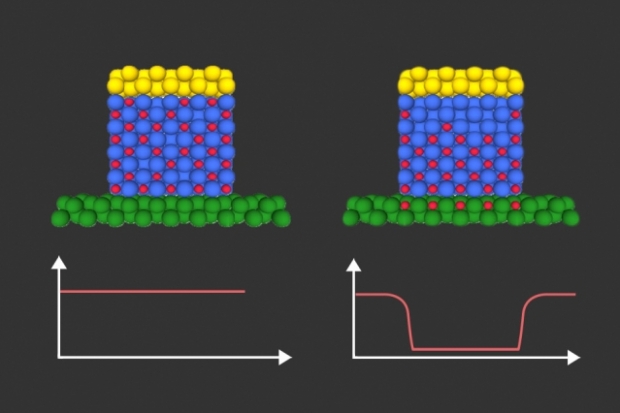MIT boffins at Brookhaven National Laboratory have demonstrated that they can control the magnetic properties of a thin-film material by merely applying a small voltage. Changes in magnetic orientation made in this way remain in their new state without the need for any ongoing power, unlike today's standard memory chips, the team has found.
The new finding, which could overcome some of the inherent physical limitations that have been slowing progress in this area, is being reported in the journal Nature Materials. Geoffrey Beach, a professor of materials science and engineering and co-director of the MIT Materials Research Laboratory; graduate student Aik Jun Tan; and eight others at MIT and Brookhaven wrote that as silicon microchips draw closer to fundamental physical limits that could cap their ability to continue increasing their capabilities while decreasing their power consumption. Their research has covered a variety of new technologies that might get around these limits.
One of the best is an approach called spintronics, which makes use of a property of electrons called spin, instead of their electrical charge. Because spintronic devices can retain their magnetic properties without the need for constant power, which silicon memory chips require, they need far less power to operate. They also generate far less heat -- another major limiting factor for today's devices.
But spintronic technology suffers from its limitations. One of the most significant missing ingredients has been a way to quickly control the magnetic properties of a material electrically, by applying a voltage. Many research groups around the world have been pursuing that challenge.
Previous attempts have relied on electron accumulation at the interface between a metallic magnet and an insulator, using a device structure similar to a capacitor. The electrical charge can change the magnetic properties of the material, but only by a minimal amount, making it impractical for use in real devices. There have also been attempts at using ions instead of electrons to change magnetic properties. For instance, oxygen ions have been used to oxidise a thin layer of magnetic material, causing an extremely large change in magnetic properties. However, the insertion and removal of oxygen ions cause the material to swell and shrink, causing mechanical damage that limits the process to just a few repetitions — rendering it essentially useless for computational devices.
The new finding demonstrates a way around that, by using hydrogen ions instead of the much larger oxygen ions used in previous attempts. Since the hydrogen ions can zip in and out quickly, the new system is much faster and provides other significant advantages, the researchers say.
Because the hydrogen ions are so much smaller, they can enter and exit from the crystalline structure of the spintronic device, changing its magnetic orientation each time, without damaging the material. The team has now demonstrated that the process produces no degradation of the material after more than 2,000 cycles. And, unlike oxygen ions, hydrogen can easily pass through metal layers, which allows the team to control the properties of layers deep in a device that couldn’t be controlled in any other way.
“When you pump hydrogen toward the magnet, the magnetisation rotates”, Tan says, “you can toggle the direction of the magnetisation by 90 degrees by applying a voltage — and it’s fully reversible.” Since the orientation of the poles of the magnet is what is used to store information, this means it is possible to easily write and erase data “bits” in spintronic devices using this effect.

